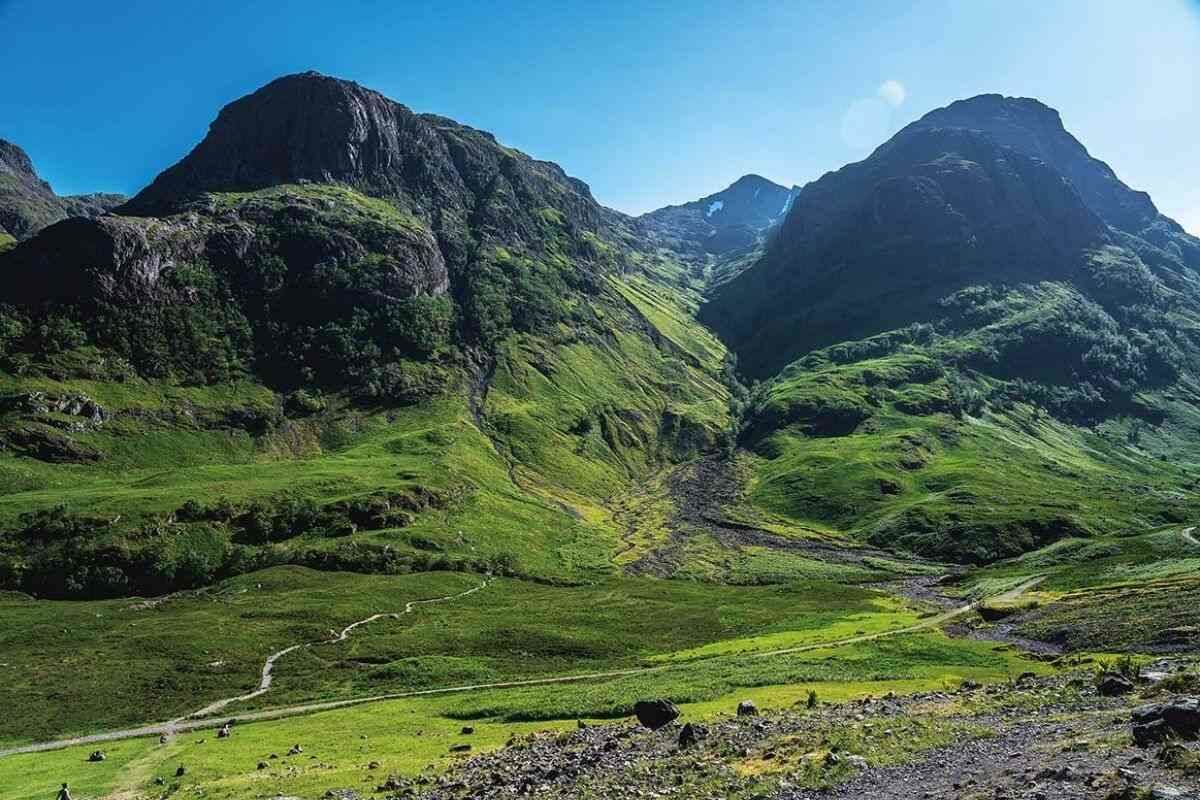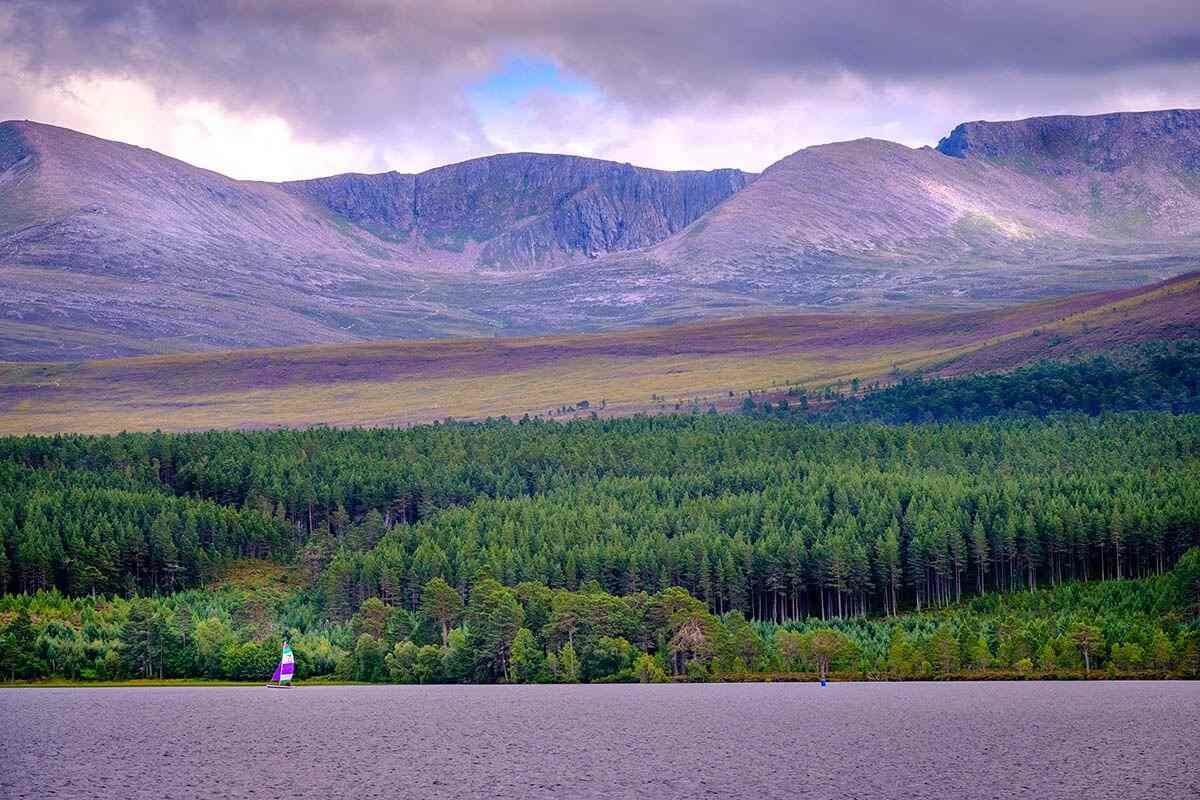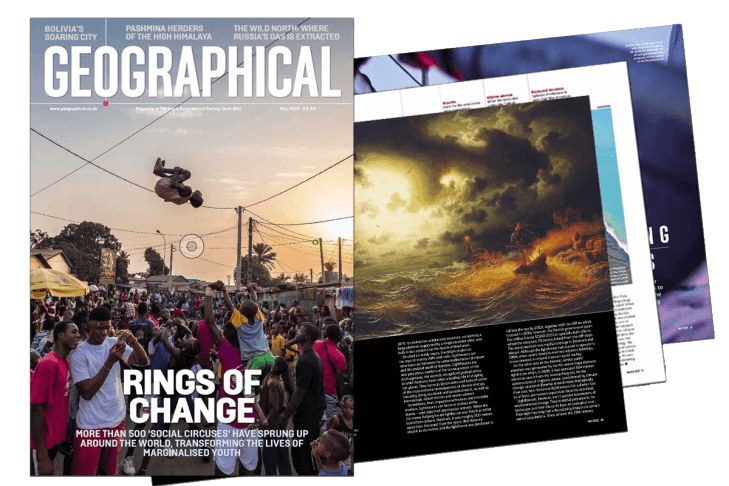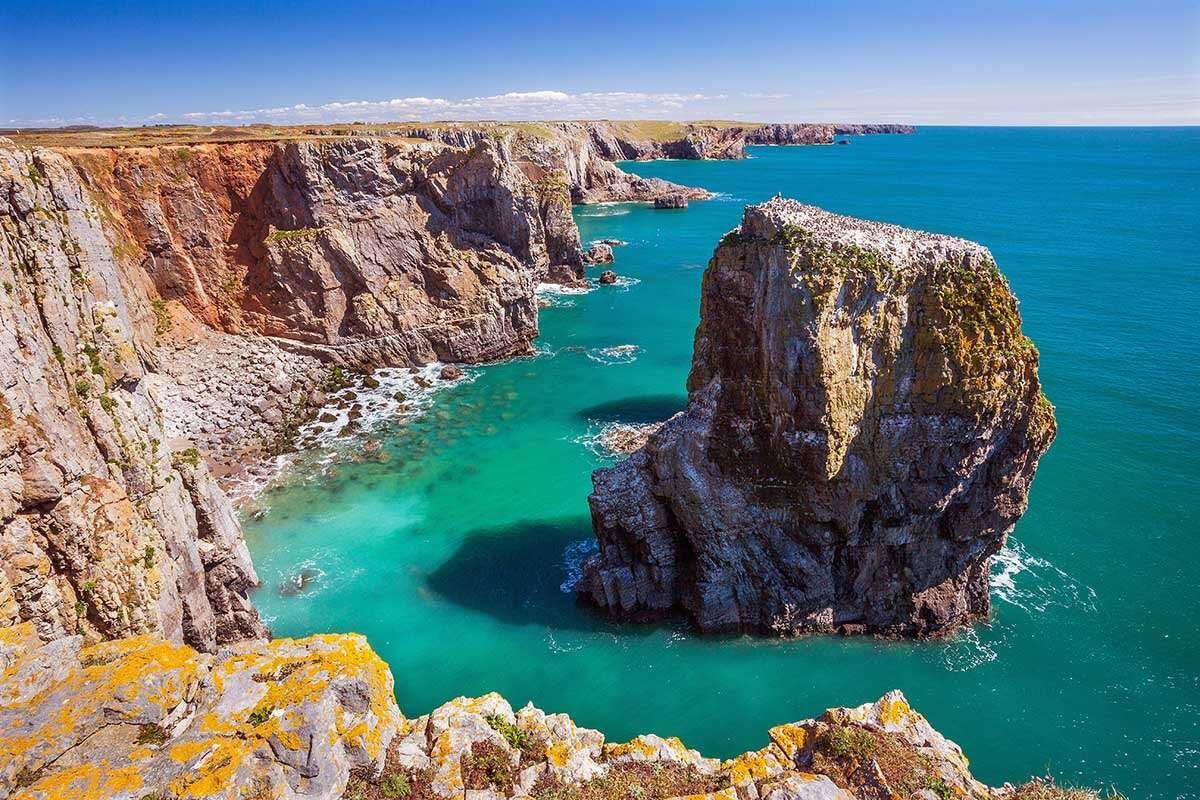
Mountains provide a dramatic sight at the best of times, and no time is better than early spring
By Keith Wilson
Spring has always been a popular time for people to seek out a fresh viewpoint by stepping out of their winter lairs to witness nature’s reawakening and the longer hours of daylight. This is also the season when trekkers, ramblers and hikers repopulate the high country, criss-crossing moors, traversing mountain ridges or roping up for steeper ascents of vertiginous rock faces to a hallowed summit.
Of course, no summit is more revered than Everest, but many of the principles and caveats that apply on those high peaks are just as relevant to the lower altitudes of Europe and the UK. Whether climbing Everest or Ben Nevis, preparation and planning is key, and that includes deciding what camera equipment to pack and the techniques to deploy for your photography. Even in the UK, one should also expect to encounter wintry conditions at this time of year, including windblown sleet and fresh snowfalls, which will require frequent adjustments to exposure and the use of filters to control varying degrees of contrast and brightness.
Stay connected with the Geographical newsletter!
In these turbulent times, we’re committed to telling expansive stories from across the globe, highlighting the everyday lives of normal but extraordinary people. Stay informed and engaged with Geographical.
Get Geographical’s latest news delivered straight to your inbox every Friday!
Mountain light
Because the weather changes rapidly in alpine regions, the light conditions rarely stay the same for long – fleeting moments of high contrast as the sun breaks out from high cloud are a constant occurrence. This unpredictability is what makes mountain light so dramatic yet also challenging for photography. Most photographers favour the ‘golden hour’ near sunrise and sunset as the ideal time to shoot landscapes or other outdoor subjects. However, the terrain of the world’s great mountain ranges means valleys remain in shadow when the peaks are lit by the first and last rays of the day. In many cases, it is only when the sun is high that the full face of a mountain from peak to valley will be evenly lit.
Another factor at higher altitudes is the greater amount of ultraviolet light that penetrates the atmosphere, often resulting in a strong blue cast to the sky and to reflective white surfaces of ice and snow. Navigating your camera menu to manually adjust the colour temperature settings may provide enough in-camera compensation, but some still prefer the ‘old school’ approach of adding an ultraviolet (UV) lens filter to reduce the effect of UV light. Another option is the 81a, 81b and 81c series of ‘warm-up’ filters, which counteract the blue cast with a bias to warm colour tones of varying degrees.
Adding depth and scale
Compensating for ultraviolet light may not be a major concern on the lesser heights of Britain’s hills and mountains, but there are many other factors to consider regarding filtration, exposure and composition, which are also relevant to photographing mountains, regardless of their height. For instance, even on the comparatively small hills of the British Isles, the context and scale of a mountain within the surrounding terrain is made more evident by including other geographical features such as scree slopes, gullies and watercourses. By framing your photo (using wider focal length lenses) to include such elements in the foreground, the actual size and scale of a mountain is placed into context. Large rocks or boulders in the foreground also serve to counterbalance the dominant form of a mountain backdrop, thereby providing a sense of scale and distance to the peak.
On a clear day, the shape of a mountain summit is easily defined against the sky, but mountains also attract cloud, high winds and rain. One benefit of a cloudy sky is that it diffuses the light evenly across the overall scene, thereby making it easier to obtain an accurate exposure reading. Of course, there is the chance of low cloud obscuring the view of a summit, but a partial covering can add grandeur to the scene. The presence of cloud tempts many photographers to add a polarising filter to emphasise the form and shape of cloud cover, but too much polarisation can darken areas of clear sky to an almost unnatural level of deep blue.

Britain’s Arctic plateau
While Britain’s highest mountain is Ben Nevis in the western highlands of Scotland, it is further northeast in the Cairngorms where the country’s terrain has more in common with the geography and extreme weather conditions to be experienced in the Alps and even the Arctic. The Cairngorms are Britain’s most extensive area of Arctic-alpine landscape, with rounded granite peaks and valleys formed by glacial erosion. It is also the location of the largest, highest and coldest plateau in Britain, with a climate similar to the Arctic tundra.
After Ben Nevis, Britain’s next four highest mountains are situated here, which makes it a popular location for ‘Munro baggers’, that hardy clique of walkers and climbers determined to reach the summit of every Scottish peak over 3,000 feet. At such heights, gale-force winds and blizzards are common and snow settles all year on some parts of this freezing massif. Wind speeds in excess of 160kmh are not unusual and it was on the actual Cairn Gorm summit in March 1986 that the highest ever wind speed in the UK was recorded – a ferocious 274kmh. Apart from the sub-Arctic climate, this expanse of mountainous granite terrain is renowned for the glacial valleys shaped by erosion since the last ice age. One glacial valley especially popular with walkers and photographers is Lairig Ghru, a 43km-long mountain pass between Aviemore and Braemar. If you’re fortunate with the weather conditions, framing the classic U-shape with a wide-angle lens will reward you with a picture of one of Britain’s most dramatic views.
Harder to photograph is the Cairgorms’ own mythical resident, a yeti-like creature known in Gaelic as Am Fear Liath Mòr, (The Big Grey Man of Ben Macdui), which legend claims resides on Ben Macdui, Britain’s second highest mountain. Frankly, trying to photograph the Loch Ness Monster is a better bet and involves far less risk.
New views from old routes
Of course, there are more accessible and less arduous elevated viewpoints for photographers to explore in the British Isles – and with more clement weather. A feature of the British landscape is the proliferation of public paths and bridleways, many of which date back to medieval times when no journey was quicker than the pace of the beasts of burden deployed. The Ridgeway, a 240km path from the Dorset coast to The Wash in Norfolk, is Britain’s oldest road.
For hundreds of years up to the mid-18th century it was a major route for traders, drovers and travellers. As its name implies, the route of this ancient road followed a ridge across higher ground, which meant it drained better naturally and was drier and firmer than roads lower down. Today, it is popular with walkers and photographers drawn to the views across some of the most picturesque scenery in rural England and access to historic sites that include Stonehenge, the Uffington White Horse and Avebury stone circle. Each is a popular standalone subject for the camera, but it is the Ridgeway that connects them.

Subscribe to our monthly print magazine!
Subscribe to Geographical today for just £38 a year. Our monthly print magazine is packed full of cutting-edge stories and stunning photography, perfect for anyone fascinated by the world, its landscapes, people and cultures. From climate change and the environment, to scientific developments and global health, we cover a huge range of topics that span the globe. Plus, every issue includes book recommendations, infographics, maps and more!
Other pedestrian paths famed for their picturesque views are the Pilgrims’ Way and North Downs Way between Winchester and Canterbury, the sea cliff vistas of the Pembrokeshire Coast Path and the mountain spectacles of the West Highland Way. The geography associated with these routes means these paths are still exposed to changeable weather, particularly those following a ridgeline or high contour.
On many sections the open sky dominates the scene. Photographically, this means higher contrast levels can be expected on bright days, making it difficult to meter accurately for the wide range of light levels between bright sun and darker tones and shadows on any landforms. In such high contrast situations, your camera’s High Dynamic Range (HDR) proves its worth. In this mode, the camera makes several separate exposures in quick succession, each weighted to a different metered area of the scene. These different exposures are then automatically overlayed onto a single image that gives a ‘correctly exposed’ depiction across the whole frame.

Boots and bracketing
Whether shooting wide-angle landscapes on an exposed Cairngorm summit or framing the view from a high rural path, early spring means you should be prepared for some challenging lighting. Snow and ice can still be encountered on higher ground. Including such reflective surfaces in your picture can fool even the most sophisticated camera meters into underexposing the scene. However, this can be overcome easily by taking a spot reading off a neutral tone, such as the rough grey surface of granite, or even from your own clothing, then locking this exposure by engaging your camera automatic exposure lock (AEL). In addition, try switching the camera drive to continuous so you can bracket half a stop either side that exposure reading for a burst of frames. By comparing the results on the monitor, you can decide which is the most accurate or aesthetically pleasing result.
Mastering bracketing and other techniques for photographing mountains and views is one thing, but getting there (and down) in one piece is vital. Three-season walking boots are essential, and crampons should be taken if venturing above the snowline. It may be spring but this time of year in the high country and especially on the higher mountains abroad, demands that a thermal jacket, hat and gloves are also worn. Even on those rare warm days, when such layers might seem excessive, always take them with you as wind and air temperature can drop suddenly, particularly at higher altitudes.
For such hikes, a backpack is the best means for carrying photo gear, as well as the food and drink needed to maintain energy levels, and extra clothing, including waterproofs. ‘Travel light’ is a maxim adopted by many Alpine purists and worth following, but also ensure that all that you carry is needed and nothing that is vital is left behind.
Tips for photographing mountains
Do
- Take a telephoto zoom lens for flexibility. This reduces the number of lens changes, thereby reducing chances of missed pictures, dropping kit or exposing the camera sensor to dust and moisture.
- Include foreground interest in the frame. Features such as a wall, farm building, gully or stream add scale to the scene and depth to the image.
- Pack some spare batteries. Even on a warm spring day, mountain air is chillier and more exposed to cold gusts of wind. Cold air drains batteries much faster than most people think.
Don’t
- Overburden yourself with too much gear, particularly if strenuous walking is involved. Only take what is relevant to your location and the types of pictures you have in mind.
- Take pictures when the sun is too bright or high. Harsh light results in high contrast with deep shadow areas. Far better to photograph early or late in the day when the light is low enough to pick out shape and surface detail in the landscape.
- Wander from the marked track or path when trekking up a hill or along a ridge – your first concern should always be your personal safety
Equipment selection
CLOTHING: Waterproof trousers
Given how frequently we find ourselves caught out in the rain it’s a wonder that waterproof trousers aren’t considered everyday attire. The aptly named Berghaus Deluge (£50) is a men’s overtrouser designed to provide complete protection from the worst of the British weather. The specially made synthetic fabric is lightweight as well as hard-wearing and an elasticated waist and side zips means they can be pulled on or off with ease. The knees are articulated for freedom of movement and there are side zips and upper leg venting for extra comfort.
www.berghaus.com
LENS: Standard zoom
There’s hardly a photographer on the planet who doesn’t possess a standard zoom, such is the convenience of having focal lengths from wide-angle to short telephoto in one lens. The Sigma 24-70mm f/2.8 DG OS HSM (£1,400) is notable for a constant f/2.8 aperture throughout its focal range. In addition, the lens features an optical stabiliser to counteract vibrations and a hypersonic motor for silent autofocus use. The lens is built to withstand rugged conditions with a metal barrel and rubber sealed lens mount to keep out moisture and dust.
www.sigma-imaging-uk.com
CAMERA:Lightweight full-frame DSLR
Full-frame DSLRs don’t come cheap, but the Canon EOS 6D Mark II (£1,700 body only), which can match most of the performance for less than half the price. The Mark II is an update on the seven-year-old original and features a 26MP sensor, 45-point AF system, fully articulating touchscreen, built-in Wi-Fi and GPS capability and 6.5fps burst shooting, all contained within a compact weather-sealed body.
www.canon.co.uk
Recommended reading
Mountain Light by Galen Rowell; £17.20
Scotland’s Mountains: A Photographers View by Joe Cornish; £25
The Cairngorms: Walks, Trails and Scrambles by Ronald Turnbull; £14

Subscribe to our monthly print magazine!
Subscribe to Geographical today for just £38 a year. Our monthly print magazine is packed full of cutting-edge stories and stunning photography, perfect for anyone fascinated by the world, its landscapes, people and cultures. From climate change and the environment, to scientific developments and global health, we cover a huge range of topics that span the globe. Plus, every issue includes book recommendations, infographics, maps and more!




